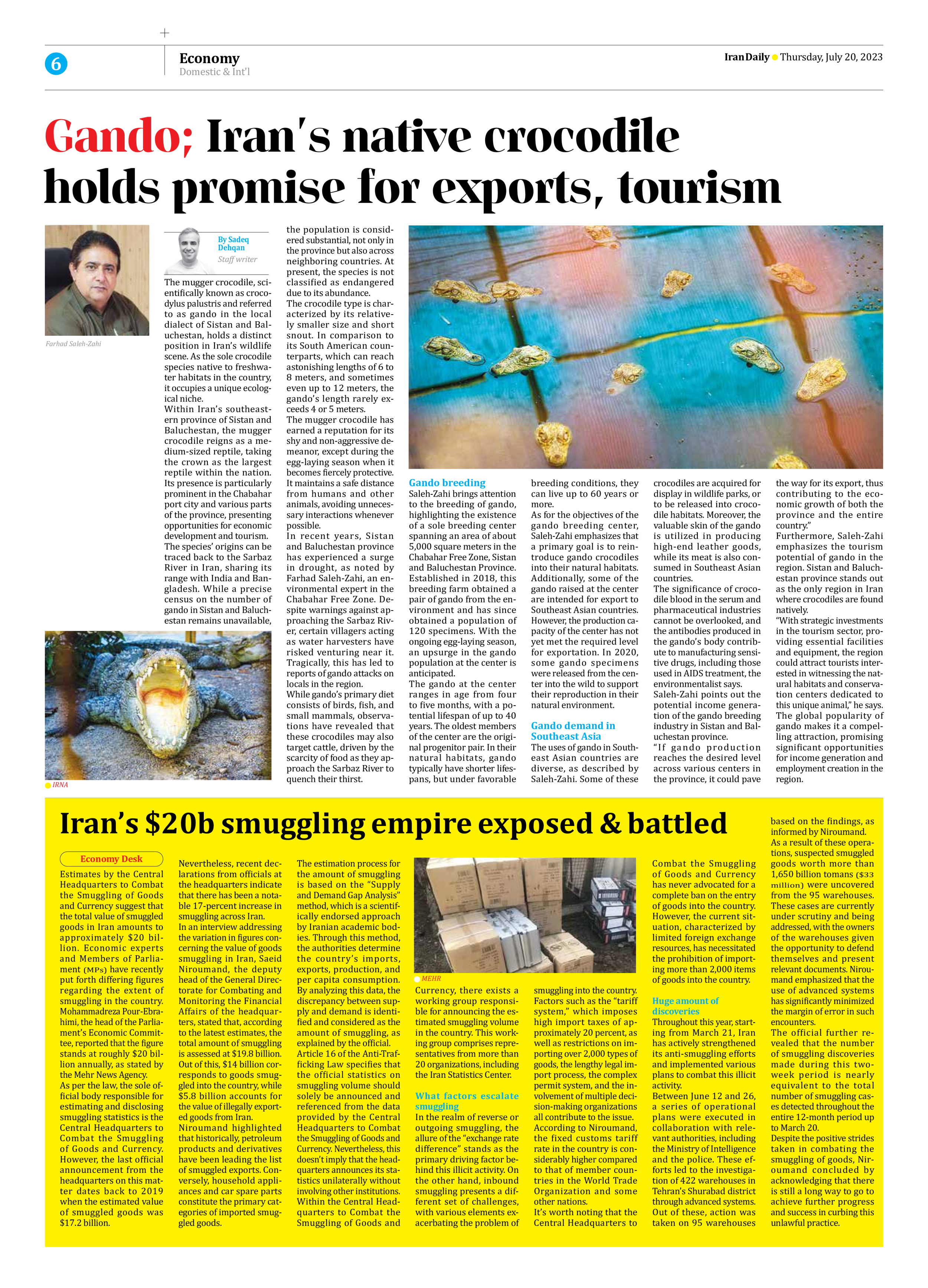
Iran’s $20b smuggling empire exposed & battled
Estimates by the Central Headquarters to Combat the Smuggling of Goods and Currency suggest that the total value of smuggled goods in Iran amounts to approximately $20 billion. Economic experts and Members of Parliament (MPs) have recently put forth differing figures regarding the extent of smuggling in the country. Mohammadreza Pour-Ebrahimi, the head of the Parliament’s Economic Committee, reported that the figure stands at roughly $20 billion annually, as stated by the Mehr News Agency.
As per the law, the sole official body responsible for estimating and disclosing smuggling statistics is the Central Headquarters to Combat the Smuggling of Goods and Currency. However, the last official announcement from the headquarters on this matter dates back to 2019 when the estimated value of smuggled goods was $17.2 billion.
Nevertheless, recent declarations from officials at the headquarters indicate that there has been a notable 17-percent increase in smuggling across Iran.
In an interview addressing the variation in figures concerning the value of goods smuggling in Iran, Saeid Niroumand, the deputy head of the General Directorate for Combating and Monitoring the Financial Affairs of the headquarters, stated that, according to the latest estimates, the total amount of smuggling is assessed at $19.8 billion. Out of this, $14 billion corresponds to goods smuggled into the country, while $5.8 billion accounts for the value of illegally exported goods from Iran.
Niroumand highlighted that historically, petroleum products and derivatives have been leading the list of smuggled exports. Conversely, household appliances and car spare parts constitute the primary categories of imported smuggled goods.
The estimation process for the amount of smuggling is based on the “Supply and Demand Gap Analysis” method, which is a scientifically endorsed approach by Iranian academic bodies. Through this method, the authorities determine the country’s imports, exports, production, and per capita consumption. By analyzing this data, the discrepancy between supply and demand is identified and considered as the amount of smuggling, as explained by the official.
Article 16 of the Anti-Trafficking Law specifies that the official statistics on smuggling volume should solely be announced and referenced from the data provided by the Central Headquarters to Combat the Smuggling of Goods and Currency. Nevertheless, this doesn’t imply that the headquarters announces its statistics unilaterally without involving other institutions.
Within the Central Headquarters to Combat the Smuggling of Goods and Currency, there exists a working group responsible for announcing the estimated smuggling volume in the country. This working group comprises representatives from more than 20 organizations, including the Iran Statistics Center.
What factors escalate smuggling
In the realm of reverse or outgoing smuggling, the allure of the “exchange rate difference” stands as the primary driving factor behind this illicit activity. On the other hand, inbound smuggling presents a different set of challenges, with various elements exacerbating the problem of smuggling into the country. Factors such as the “tariff system,” which imposes high import taxes of approximately 20 percent, as well as restrictions on importing over 2,000 types of goods, the lengthy legal import process, the complex permit system, and the involvement of multiple decision-making organizations all contribute to the issue.
According to Niroumand, the fixed customs tariff rate in the country is considerably higher compared to that of member countries in the World Trade Organization and some other nations.
It’s worth noting that the Central Headquarters to Combat the Smuggling of Goods and Currency has never advocated for a complete ban on the entry of goods into the country. However, the current situation, characterized by limited foreign exchange resources, has necessitated the prohibition of importing more than 2,000 items of goods into the country.
Huge amount of
discoveries
Throughout this year, starting from March 21, Iran has actively strengthened its anti-smuggling efforts and implemented various plans to combat this illicit activity.
Between June 12 and 26, a series of operational plans were executed in collaboration with relevant authorities, including the Ministry of Intelligence and the police. These efforts led to the investigation of 422 warehouses in Tehran’s Shurabad district through advanced systems. Out of these, action was taken on 95 warehouses based on the findings, as informed by Niroumand.
As a result of these operations, suspected smuggled goods worth more than 1,650 billion tomans ($33 million) were uncovered from the 95 warehouses. These cases are currently under scrutiny and being addressed, with the owners of the warehouses given the opportunity to defend themselves and present relevant documents. Niroumand emphasized that the use of advanced systems has significantly minimized the margin of error in such encounters.
The official further revealed that the number of smuggling discoveries made during this two-week period is nearly equivalent to the total number of smuggling cases detected throughout the entire 12-month period up to March 20.
Despite the positive strides taken in combating the smuggling of goods, Niroumand concluded by acknowledging that there is still a long way to go to achieve further progress and success in curbing this unlawful practice.







